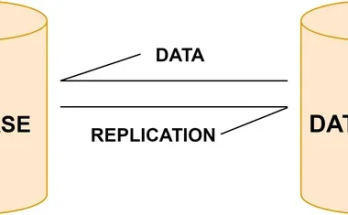Introduction
Think of a situation where you are designing a plan for a new structure. Although people think of an efficient and robust design of the building when they hear an architect’s plan, a SQL scheme is a model on how data from a database will be organized. It gives the specification on how the data will be stored, how they will be linked or associated and how the required data are recovered without much formalization of the concepts behind this. In this article, you will learn which scheme in SQL is, the parts of an outline and how an outline works within the framework of relational databases, so you can master this concept and appreciate its function within this field.

Learning outcomes
- Know what a scheme in SQL is and why it is used.
- Find out in the different parts that are involved in the formulation of an outline.
- Know the SQL and its functions how to create, alter and drop schemes from the database.
- Explore best practices to design effective database schemes.
- Get information about common use cases and examples of schemes in real world applications.
What is a scheme in SQL?
A SQL scheme is a set of structures that contain object definitions within a database. Essentially serves as a container for tables, views, indexes, procedures and the like. It guarantees that the data is well stored and this is accompanied by relationships between different data sets.
- Structure: The schemes provide a structured way of organizing data, facilitating management and consultation.
- Security: By grouping related objects, schemes help to enforce data safety and access controls.
- Organization: They allow the database administrators to separate and logically manage parts of different parts of the database.
Components of a scheme
- Tables: Store data in rows and columns. Each table represents a specific entity, such as customers or orders.
- View: Virtual tables created when consulting one or more tables. Views provide a way to present data without altering the underlying tables.
- Indices: Improves the speed of data recovery operations by creating a faster search mechanism for table columns.
- Store procedures: Predefined SQL queries or operations that can be executed repeatedly. They help encapsulate logic and improve performance.
- Restrictions: Rules applied to data columns to ensure data integrity. Common restrictions include primary keys, foreign keys and unique restrictions.
Creation and management of schemes
We will now learn how to create schemes and then manage it efficiently.
Creating a scheme
In SQL you can create schemes using the CREATE SCHEMA statement. For example:
CREATE SCHEMA sales;This command creates a new scheme called “Sales”.
Adding objects to a scheme
Once a scheme is created, you can add objects to it. For example, to create a table within the “Sales” scheme:
CREATE TABLE sales.customers (
customer_id INT PRIMARY KEY,
customer_name VARCHAR(100),
contact_email VARCHAR(100)
);By modifying an outline
To modify an existing scheme, such as adding a new table or altering an existing table, use ALTER statements. For example:
ALTER TABLE sales.customers ADD phone_number VARCHAR(15);Falling out a scheme
To remove an outline and all your content objects, use the DROP SCHEMA Declaration:
DROP SCHEMA sales CASCADE;It CASCADE The keyword ensures that all objects within the scheme are also eliminated.
Advantages of using schemes
- Improved organization: The schemes provide a clear structure for organizing database objects, facilitating data management and location.
- Best security: By isolating different parts of the database, the schemes help to enforce access controls and protect sensitive information.
- Simplified Maintenance: The schemes allow a logical grouping of objects, which simplifies the maintenance and modifications of databases.
- EFFICIENT DATA MANAGEMENT: The clear clear schemes provide the efficiency of the storage and use of data that leads to the improvement of the performance.
- Facilitates development: The schemes help in the development process as different developers can work in different sections of the database at the same time without causing conflicts.
Best practices to design schemes
- Normalization: If you do, it measures the variety in accordance with the principles of standardization to minimize redundancy and sharpen data quality.
- Appointment conventions: Use standard and significant names for tables, fields and various items used in the database.
- Documentation: Document the scheme of documents and their association for inspection and easy improvements in the future.
- Indexing: When the columns are often used in search queries, then create indices in those columns to get better performance.
- Security: Choose and apply access control measures and permissions to limit access to various data.
Common challenges with the schemes
- Complexity: As the databases grow, the schemes can become complex, making management and understanding more difficult.
- Scalability: Ensure that scheme design scales with data growth and organization may be difficult.
- Migration: Changes in the scheme design may require careful planning and execution to prevent data loss or corruption.
- Output: The design of inefficient schemes can lead to performance problems, requiring optimization and adjustments.
Conclusion
The schemes are very important in the structure as well as in the data administration within the SQL database. In this way, the schemes help specify data storage, their recovery and also provide the means to protect the information. Knowledge of creation, alteration and outline of schemes is crucial when it comes to establishing an efficient database system. When you are using SQL, know some guidelines about how the scheme should also be designed allows you to build good databases.
Frequent questions
A. A scheme in SQL is a collection of database objects, such as tables, views and indexes, which defines the structure and data organization.
A. Use the CREATE SCHEMA Statement followed by the name of the scheme. For example: CREATE SCHEMA sales;.
A. Components include tables, views, indices, stored procedures and restrictions.
A. Use ALTER The instructions for modifying the existing tables or adding new objects within the scheme.
A. Schemes help organize data, apply security, and maintain data integrity by providing a structured framework for database objects.

